Midtown Scholar: An Enticing Maze
When you walk into a bookstore, the immediate focus should always be the books and the numerous forms of shelving that hold them. The layout of these shelves and the books they contain show the priorities the bookseller places on certain titles and genres over others. It shows how they want their customers to move through the store, and the way they mean for them to interact with the books and the store itself. In a Book Riot article titled “The Science and Recent History of Bookstore Design” and written by Lyndsie Manusos, a bookseller they interviewed stated, “The modern bookstore is about an intellectual browsing environment throughout the store… Our job, when you come into our stores, it’s just fun, it’s exciting, you walk out with books you had no idea that you needed, wanted, and feel really good about it.”
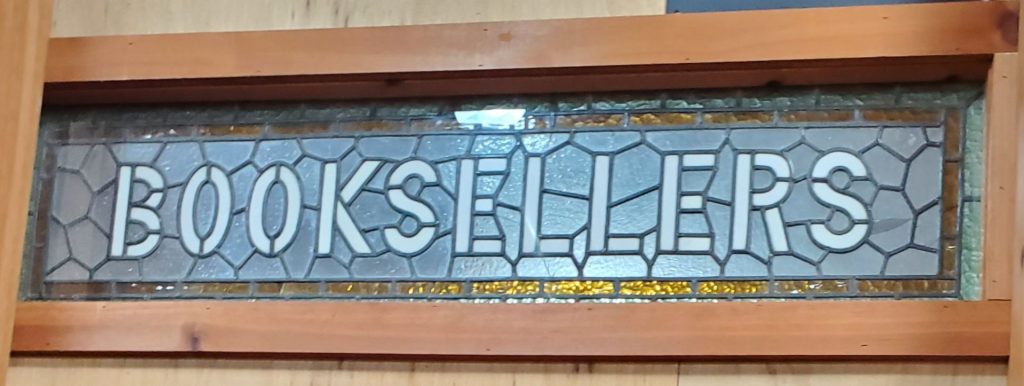
Filled with around 200,000 titles, the bookshelves of Midtown Scholar Bookstore span six floors over two buildings along with the numerous metal, library carts holding used books that customers can browse before even getting to the front door. It is a store full of wonder and gives people a chance to walk out with things they may not have expected including a desire to return and continue exploring again later.
Midtown Scholar Bookstore was founded by Eric Papenfuse and Catherine Lawerence. Both were proud book collectors from long before they even met, as they explain in an interview from April of 2023. Both have backgrounds in history and teaching that led to their specialty in academic, used, and antique texts.
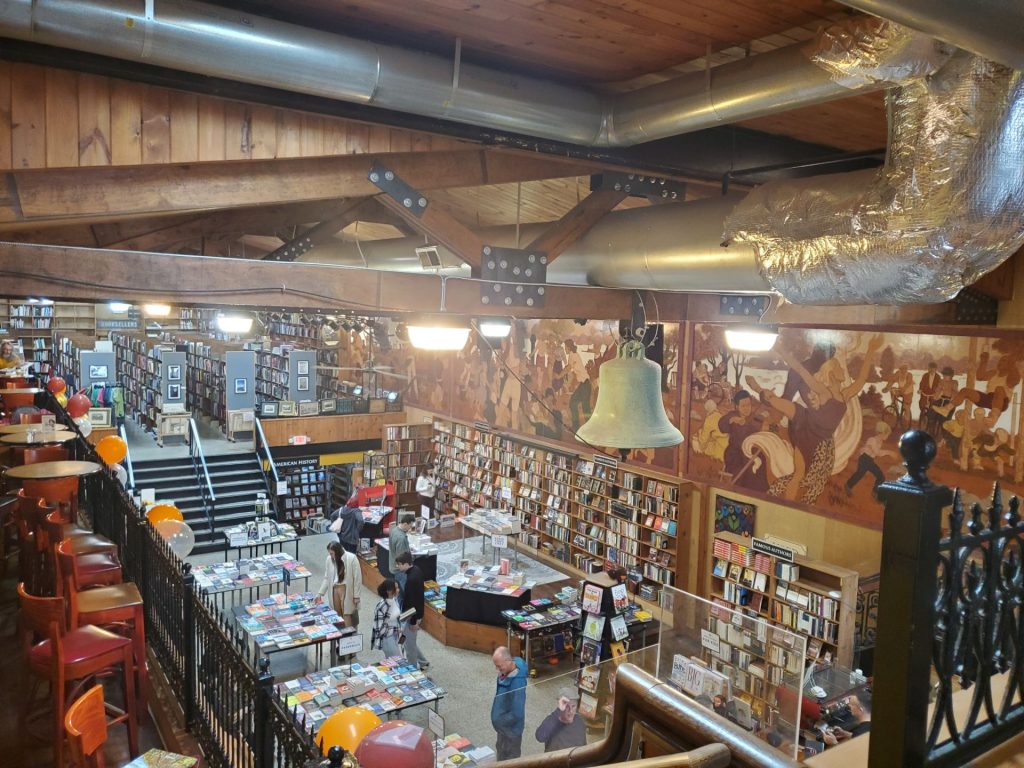
The main floor of the Scholar has a multitude of tables upon walking in that they adorn with mostly new titles to fit adjusted themes for whatever is going on at the time (The Harrisburg Book Festival, holidays, signed recently, etc.). The standing shelves against the wall closest to the door hold staff picks/ blind dates with books and bestsellers. Other tables on this floor feature a multitude of categories displaying what books the booksellers believe would be of most interest to the clientele, like a table specifically for books written by women or the newest paperback releases. These tables can be found placed on the staging area as well when the store is not hosting an event. They also have a display for the merchandise of the store itself and the brand they push on a small standing shelf with shelving on all four sides, so customers walk around the whole thing to see all the merch.
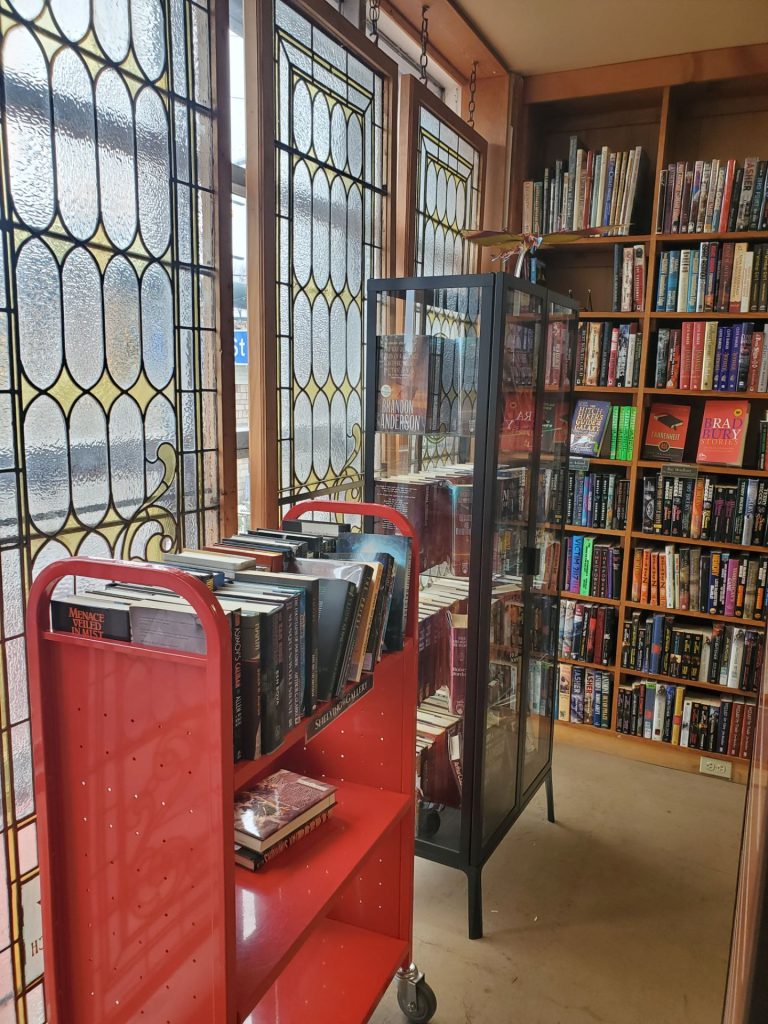
Midtown Scholar’s checkout counter is part of their coffee bar, one of the first things a visitor sees when they come in, which gives people the chance to get a drink right when they arrive, or when they go to ask a question. People are more than welcome to walk around with their beverages, but if they’d like to sit they can go to the mezzanine level of the store. As a mainly academic bookstore, Midtown Scholar makes a point to place their books in a way that best displays their niche. The reflection of these things is vividly portrayed in the layout and flow of the shelves and titles around the Scholar, including on the mezzanine. There are two ways to go up, either straight into Art History, where rolling ladders are attached to the shelves to allow access to the upper levels, giving very much Beauty & the Beast vibes, and where a Pop Culture section hides in an alcove behind it. Or you can go straight to the highest level where Fiction, Young Adult, Fantasy, Sci-fi, and Poetry sit. This places these less academic categories in a more out of the way place, potentially in hopes that customers will wander about before making their way to those shelves.
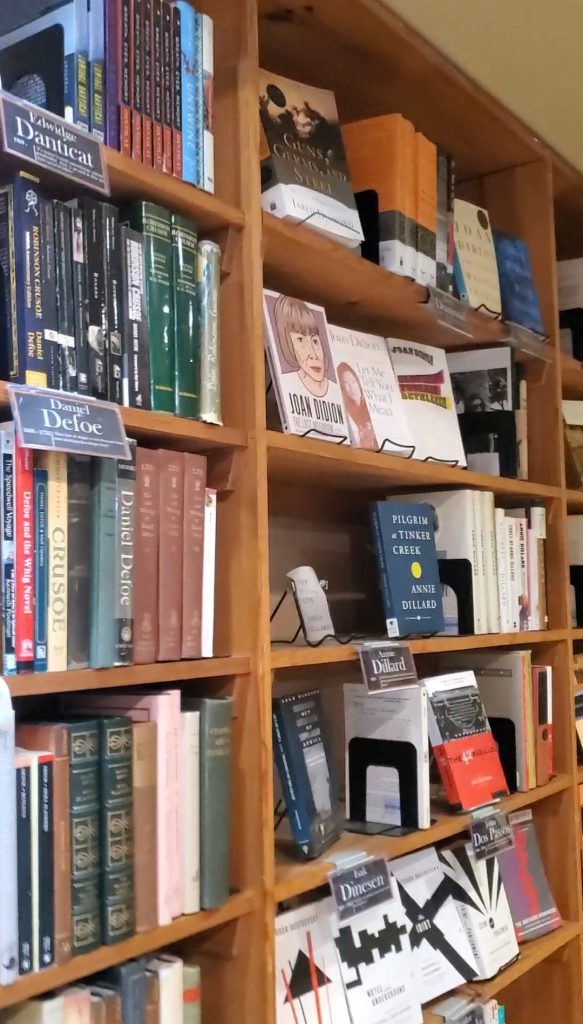
The majority of the shelves on the main floor level are “Famous Authors” shelves, adorned with classic and canon titles in alphabetical order by author’s last name, with tags showing where each new author’s section begins and no concept of genre separation. The “Famous Authors” shelves are fully wooden and fixed, meaning the shelves do not readjust to fit differing sizes of books. Movable shelves provide a larger variety of options for their usage, because “A mobile bookshelf is one where shelves could be adjusted to fit either very tall or very short books and where shelves could move across the floor,” (Pyne p. 51-52). These bookshelves being stagnant shows a deliberate choice. The shelves create a unified look to the space, encircling the majority of the wall space on the main floor, and the titles that go on them give the effect of being as stagnant as the shelves themselves. These shelves even feature photos/ paintings of some of these famous authors on the edges that stick into the rest of the main area. This is a not-so-subtle way of showing the store’s inclination towards academic writing that leads customers further into the store.
If you walk down, into the deep, seemingly endless academic texts that flow throughout the depths of the store, you find a whole world of books that goes far beyond what anyone would expect when they first walk into the Scholar. Beginning with American History, the shelves ripple down into nonfiction texts of all kinds, surrounding the antique books room where the books are all displayed in cabinet shelves that require associate assistance to open. All throughout this maze of levels there are locked cabinets due to the titles’ exclusivity or price, and there’s a desk where an appraiser works to buy used books or accept donations, creating an endearingly cluttered look to the space with the boxes of books that are thrown in with the part wood, part metal shelves. An assumption that can be made from this shelving type is that they kept the uniformity of the wood, but the metal shelves allow for adjustment, and strength to handle the many tomes.
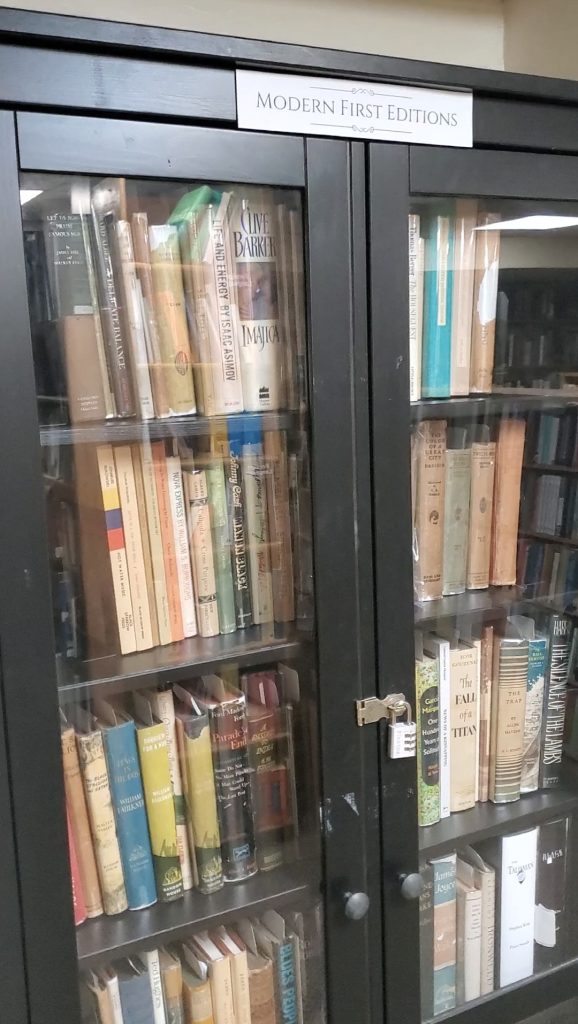
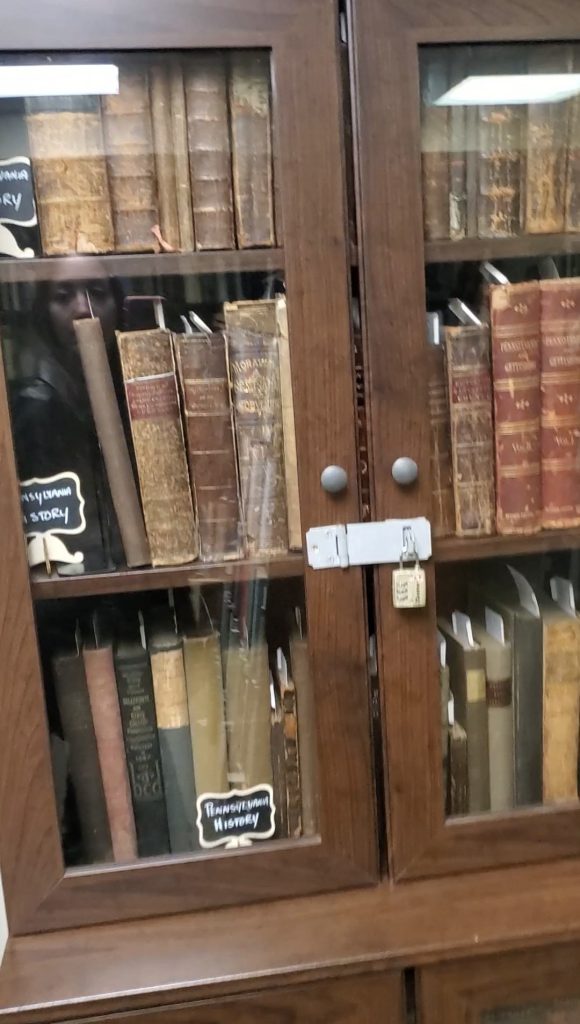
The underground of the Scholar (depicted within the floorplan above) encompasses the feeling of clandestine bookshelves, especially as one keeps going further down. “The idea of secret libraries full of clandestine bookshelves with books holding surreptitious knowledge is practically a trope that writes itself,” (Pyne p. 69). To reach the antique books in their locked cabinets and the lithography prints that grace tables in the same room, customers from the upper levels must first walk through a slightly elevated hallway that pays homage to the building’s past as The Boston Store. Photos of the old store, news clipping, and the old sign grace the walls that lead you to the antique works, showing the reverence being held for the things of the past. However, that’s not the end. Walking further in, visitors pass the sciences and gender studies to reach the Book Barn, filled with antique used books that are not valued high fiscally, but its placement secreted away in the basement gives it an intrinsic sense of value. “The secrecy that surrounds hidden bookshelves speaks to a sense that knowledge itself is a guarded thing,” (Pyne p. 74). The hidden gems of Midtown Scholar seem never ending when visitors find themselves exploring these underground shelves.
Given how much space is dedicated to the academic titles as compared to the general audience titles, one can clearly see the priority of Midtown Scholar is in its role as a scholarly bookstore. It gives reverence to its academic texts by placing them in spaces and on shelves that reflect their value. This is all just the main building, too. In giving customers an incentive to roam the store and find all the alcoves and little treasures they may have never expected, Midtown Scholar Bookstore adds to its likelihood for continuous visitation and sales.
Citations
Texts
Cheney, Jim. “Visiting Midtown Scholar Bookstore: Harrisburg’s Best Destination for Literary Lovers.” Uncovering PA, 6 Sept. 2023, uncoveringpa.com/midtown-scholar-bookstore.
Manusos, Lyndsie. “The Science and Recent History of Bookstore Design.” BOOK RIOT, 22 Feb. 2022, https://bookriot.com/the-science-and-recent-history-of-bookstore-design/.
Midtown Scholar Bookstore. “Live | the Story of an Independent Bookstore with Catherine Lawrence and Eric Papenfuse.” YouTube, YouTube, 27 Apr. 2023, www.youtube.com/watch?v=fpdFCTpNQj4&ab_channel=MidtownScholarBookstore.
Pyne, Lydia. Bookshelf. Bloomsbury Academic, 2019.
Images & Video
All images and video were taken by Olivia Neumyer on 10/29/2023.
Thing Link floorplan was created by Olivia Neumyer on 11/1/2023.

0 Comments